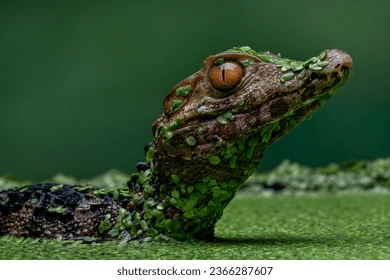Introduction: Nature's Marvel of Hibernation
In the unforgiving winter months, as food becomes scarce and survival transforms into a battle, some remarkable creatures unveil a natural superpower – hibernation. Often misconstrued as an extended slumber, hibernation involves a profound physiological transformation enabling certain mammals to endure frigid temperatures for extended periods without sustenance. While these animals may appear peacefully nestled in their dens, their bodies engage in a complex battle against stress, showcasing extraordinary adaptations.
The Physiology of Hibernation: A Formidable Challenge
Hibernation, scientifically termed "torpor," demands enduring near-freezing temperatures for extended durations without access to food or water. Achieving this seasonal feat requires excessive weight gain, prolonged periods of inactivity, the ability to reduce metabolism to a fraction of its normal rate, oxygen deprivation, and dramatic fluctuations in body temperature.
Unlocking the Secrets of Hibernation
In 2018, veterinarian scientist Ashley Zehnder and her colleagues established Fauna Bio, a biotech company aimed at unraveling the secrets of hibernation. Zehnder's fascination with hibernation stemmed from its impact on the brain. During hibernation, animals experience a state of torpor where neurons retract, lose connections, and the brain accumulates abnormal proteins called "tau tangles," akin to those found in Alzheimer's patients. Remarkably, when these creatures awaken, their brains exhibit a pristine condition, with all signs of disease fully reversed.
Navigating Interbout Excitement: Overcoming Physiological Challenges
Interbout excitement, the period during hibernation when animals transition back to an active state, poses challenges. In species like the 13-lined ground squirrel, this cycle can occur multiple times per season. Despite the damaging effects of oxygenated blood rushing back into dormant tissues, leading to inflammation and oxidative stress, these creatures can reverse the detrimental impacts on their organs.
Fauna Bio's Quest: From Genes to Molecules
Fauna Bio has targeted active genes shared by hibernators to potentially reverse torpor-related damage. The identification of small molecules corresponding to hibernator genes opens avenues for testing them in various human diseases. The first target is a molecule to reverse lung fibrosis, scheduled for clinical trials by 2025.

Human Applications: Expanding the Horizon
Beyond understanding how animals emerge from hibernation, scientists are intrigued by how they enter and sustain torpor. Brian Barnes, director of the Institute of Arctic Biology at the University of Alaska, envisions leveraging the ability to induce torpor as a life-saving intervention in situations like heart attacks, strokes, or hemorrhagic shock. This could extend the critical window for effective medical interventions, turning the "golden hour" into a "golden week."
Potential Medical Breakthroughs: From Stroke Treatments to Organ Transplants
Researchers have successfully induced torpor in non-hibernating species, demonstrating extended survival after hemorrhagic shock. Such treatments, if administered by first responders, could provide additional time for patients to receive life-saving treatments at hospitals. Additionally, torpor-inducing strategies could revolutionize organ transplantation, prolonging the viability of donated organs.
Holistic Implications: Obesity, Longevity, and Metabolic Diseases
Hibernation research reveals potential breakthroughs in addressing obesity-related issues. Hibernators, despite gaining significant body weight annually, show no adverse effects like hypertension or fatty liver disease. Researchers aim to harness the genes activated in hibernators to tackle obesity problems in humans.
Environmental Impact: Adapting to Climate Change
As the climate changes, concerns arise about the impact on hibernating animals. Observations of bears active in warmer-than-usual conditions raise questions about the fate of these creatures. Studies on ground squirrels in the Arctic show adjustments in hibernation schedules due to changing temperatures. While uncertainties persist, the remarkable adaptability of hibernators offers hope in navigating environmental changes.

Conclusion: Hibernation's Gift to Human Health
The exploration of hibernation's mysteries extends beyond the realms of zoology to hold transformative potential for human health. From stroke treatments to organ preservation and combating metabolic diseases, the secrets of hibernation offer a treasure trove of possibilities. As Fauna Bio and other research initiatives delve deeper into the genetic and molecular aspects of hibernation, a future where torpor becomes a medical tool to save lives and enhance well-being appears on the horizon. The remarkable adaptations of hibernating creatures may pave the way for innovative solutions to some of humanity's most pressing health challenges.


You must be logged in to post a comment.